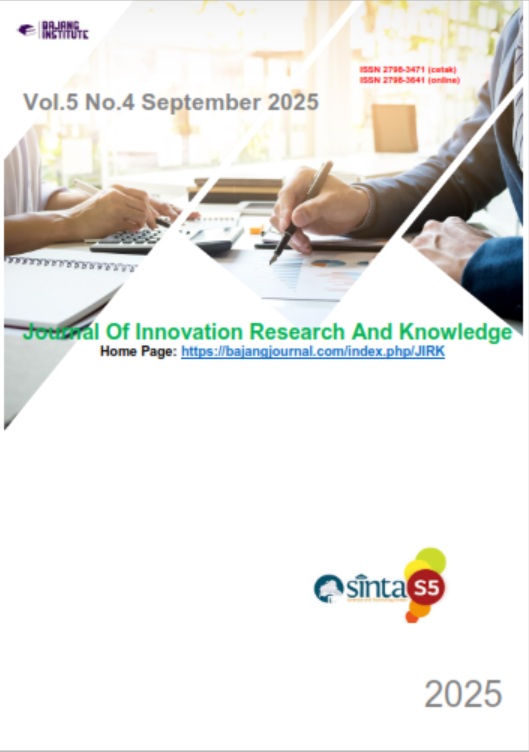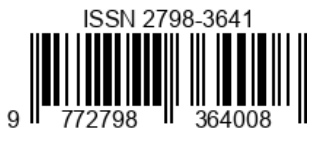STUDI KASUS PENGGUNAAN MAXIMUM INTENSITY PROJECTION DALAM MENINGKATKAN KUALITAS CITRA PADA PEMERIKSAAN CT UROGRAFI DENGAN KLINIS NEFROLITIASIS
DOI:
https://doi.org/10.53625/jirk.v5i4.11269Keywords:
CT Urography, Nephrolithiasis, Maximum Intensity ProjectionAbstract
Background: In CT Urography examinations with clinical nephrolithiasis, small stones are often difficult to detect using standard reconstruction because they are hidden between imaging slices. Maximum Intensity Projection (MIP) is a reconstruction algorithm that displays voxels with the highest attenuation into a two-dimensional image, so that high-density structures such as calcifications appear more clearly. Based on observations at the Radiology Installation of RS X, image reconstruction was added with MIP. This study aims to determine the CT Urography examination procedure and the reasons for using MIP to improve image quality in nephrolithiasis cases. Method: This qualitative research applied a case study approach. The study was conducted at the Radiology Unit of RS X in May 2025. Subjects included three radiographers and one radiologist, as well as CT urography subjects with clinical nephrolithiasis. Data were obtained through observation, documentation, and interviews, then analyzed through data reduction, data presentation, and conclusion drawing. Results: The CT urography examination procedure followed a plain abdominal protocol, with patient preparation including the consumption of 700-1000 mL of warm tea without fasting. Image reconstruction was performed by adding MIP to coronal sections showing abnormalities. MIP provided clearer and more intact visualization of the kidneys with well-defined borders. Kidney stones appeared brighter and had better contrast, with Hounsfield Unit (HU) values at 5 mm slice thickness increasing from 507 to 516 after MIP application. This increase illustrates the mechanism of MIP in displaying voxels with the highest attenuation, making stones easier to recognize. HU values before and after MIP fell within the classification range of calcium oxalate and calcium phosphate commonly found in the urinary tract. Conclusion: The use of MIP has been shown to improve image quality, particularly in visualizing kidney stones, thus supporting diagnostic accuracy and interpretive efficiency. Fasting preparation is still recommended to minimize fecal material and provide clearer visualization of the urinary tract and abnormalities
References
Alwiyah, F., Rudiyanto, W., Indria Anggraini, D., & Windarti, I. (2024). Anatomi dan Fisiologi Ginjal: Tinjauan Pustaka. Tinjauan Pustaka Medula, 14(2), 285–289.
Brisbane, W., Bailey, M. R., & Sorensen, M. D. (2016). An overview of kidney stone imaging techniques. Nature Reviews Urology, 13(11), 654–662. https://doi.org/10.1038/nrurol.2016.154
Di Muzio, B., Mistry, V., Bell, D., & Knipe, H. (2025). Maximum intensity projection. Radiopaedia.Org. https://doi.org/https://translate.google.com/website?sl=en&tl=id&hl=id&client=sge&u=https://doi.org/10.53347/rID-14801
Istiningrum, R., Fatimah, F., & Wulanhandarini, T. (2017). Analisis Informasi Citra Anatomi Vaskular dengan Multi Planar Reformating (MPR) dan Maximum Intensity Projection (MIP) pada Fase Early Arteri Pemeriksaan MSCT Abdomen. Jurnal Imejing Diagnostik (JImeD), 3(2), 240–244. https://doi.org/10.31983/jimed.v3i2.3192
Khan, S. R., Pearle, M. S., Robertson, W. G., Gambaro, G., Canales, B. K., Doizi, S., Traxer, O., & Tiselius, H. (2016). Kidney stones. Nature Publishing Group, 1–23. https://doi.org/10.1038/nrdp.2016.8
Lampignano, J. P., & Kendrick, L. E. (2018). Bontrager’s Textbook of Radiographic Positioning and Related Anatomy. Elsevier. https://books.google.co.id/books?id=SOr_vQAACAAJ
Long, B. W., Rollins, J. H., & Smith, B. J. (2015). Merrill’s Atlas of Radiographic Positioning and Procedures - E-Book: Merrill’s Atlas of Radiographic Positioning and Procedures - E-Book. Elsevier Health Sciences. https://books.google.co.id/books?id=ojAxBgAAQBAJ
Merticariu, M., Rascu, S., Anghelescu, D. V., & Merticariu, C. I. (2022). Hounsfield Measurements for Detection of Stone Composition, Density, and Overall Hardness - A Brief Report. Surgery, Gastroenterology and Oncology, 27(2), 152–156. https://doi.org/10.21614/sgo-478
Rahmawati, L. D., Iswanti, F. C., Paramita, R., Halim, A., Nurhayati, R. W., Agusta, I., & Hardiany, N. S. (2021). Distribusi Jenis Batu Ginjal pada Penderita Urolithiasis serta Hubungannya dengan Jenis Kelamin dan Usia. In eJournal Kedokteran Indonesia (Vol. 8, Issue 3). https://doi.org/10.23886/ejki.8.11874.
Rozanah. (2015). PERBANDINGAN KUALITAS CITRA CT SCAN PADA PROTOKOL DOSIS TINGGI DAN DOSIS RENDAH UNTUK PEMERIKSAAN KEPALA PASIEN DEWASA DAN ANAK. 4(1).
Sambawitasia, I. P. Y. (2022). Teknik pemeriksaan CT stonografi pada kasus nefrolitiasis di instalasi radiologi RSUD Kabupaten Buleleng. Nautical : Jurnal Ilmiah Multidisiplin Indonesia, 1(9), 868–873. https://jurnal.arkainstitute.co.id/index.php/nautical/article/view/488
Sihombing, N. N. (2021). PROSEDUR PEMERIKSAAN CT SCAN UROGRAFI DENGAN KLINIS BATU SALURAN KEMIH DI INSTALASI RADIOLOGI RUMAH SAKIT AWAL BROS PANAM.
Silalahi, M. K. (2020). Faktor-Faktor yang Berhubungan Dengan Kejadian Penyakit Batu Saluran Kemih Pada di Poli Urologi RSAU dr. Esnawan Antariksa. Jurnal Ilmiah Kesehatan, 12(2), 205–212. https://doi.org/10.37012/jik.v12i2.385
Steinmetz, S., Mercado, M. A. A., Altmann, S., Sanner, A., Kronfeld, A., Frenzel, M., Kim, D., Groppa, S., Uphaus, T., Brockmann, M. A., & Othman, A. E. (2024). Impact of deep Learning-enhanced contrast on diagnostic accuracy in stroke CT angiography. European Journal of Radiology, 181(July), 111808. https://doi.org/10.1016/j.ejrad.2024.111808
Yanto, F., Hatta, M. I., Afrianty, I., & Afriyanti, L. (2024). Pengaruh Image Enhancement Contrast Stretching dalam Klasifikasi CT-Scan Tumor Ginjal menggunakan Deep Learning. INOVTEK Polbeng - Seri Informatika, 9(1), 408–419. https://doi.org/10.35314/isi.v9i1.4233
Yudha, S. (2020). Benefits of Steeping Black Tea As a Negative Contrast Medium on Ct Urography Examination. 2(2), 70–77.
Ziemba, J. B., & Matlaga, B. R. (2017). Epidemiology and economics of nephrolithiasis. Investigative and Clinical Urology, 58(5), 299–306. https://doi.org/10.4111/icu.2017.58.5.299













